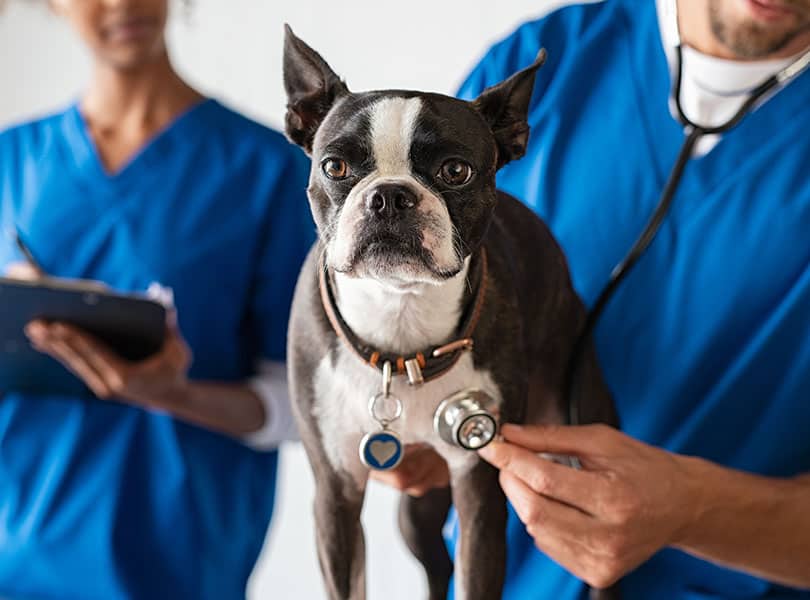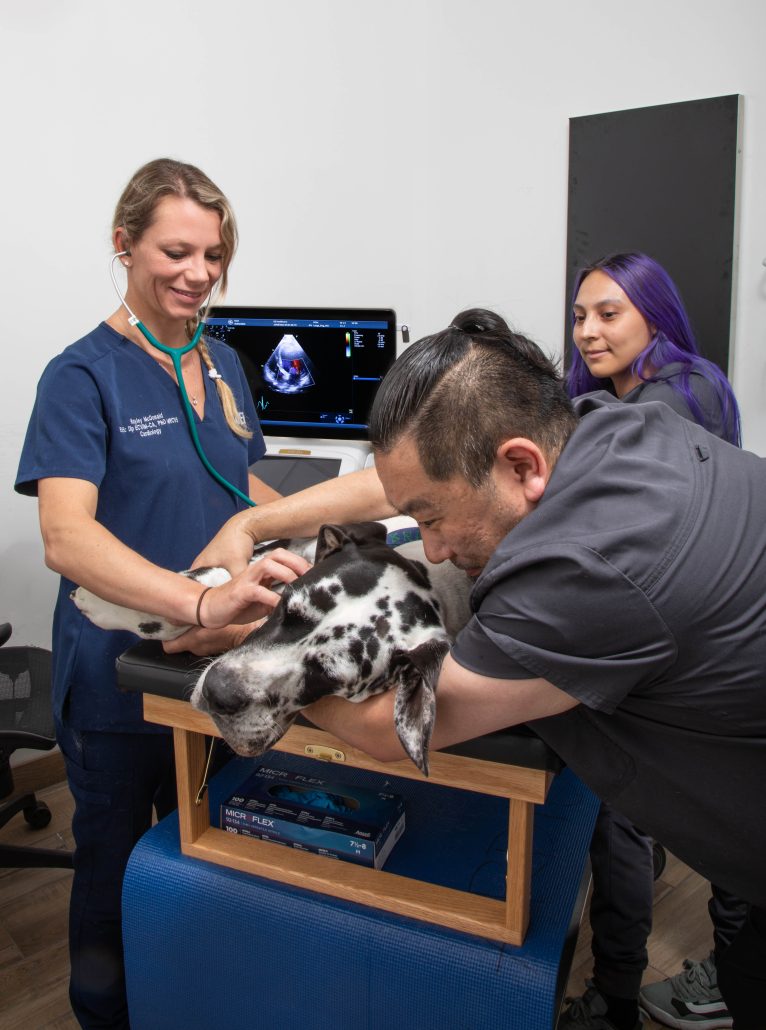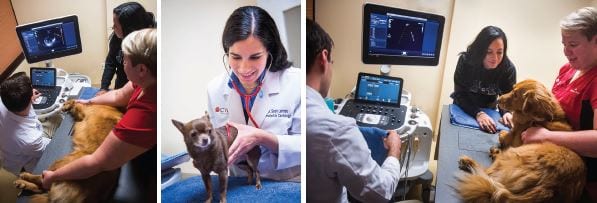What You Need to Understand About Vet Solutions: An Overview of Diagnostic Devices and Procedures
Veterinary services play an essential duty in preserving the health of pets. Normal check-ups can disclose covert health concerns beforehand. Different analysis tools and treatments, such as blood tests and imaging strategies, offer vital insights right into a pet's well-being. Recognizing these methods is crucial for animal owners. What particular diagnostic treatments are most commonly made use of, and exactly how can they influence an animal's treatment strategy?
Importance of Routine Vet Examinations
While numerous family pet owners may underestimate the relevance of regular vet check-ups, these visits are important for preserving a pet's overall health and wellness. Regular visits to the vet permit very early discovery of possible health problems before they intensify right into significant problems. Routine examinations frequently include inoculations, which are very important for avoiding infectious illness that might severely impact an animal's well-being. Additionally, these consultations give a possibility for vets to examine the pet's weight, oral wellness, and total problem, making certain that the family pet is growing. Throughout these check outs, pet dog proprietors can additionally get important recommendations on diet plan, exercise, and preventive care tailored to their particular pet's requirements.
Typical Diagnostic Treatments in Veterinary Medicine
In vet medication, precise diagnosis is essential for reliable therapy. Usual analysis procedures include blood screening methods, advanced imaging technologies, and urinalysis, each playing a significant duty in determining health and wellness problems. Comprehending these methods boosts the capacity to give proper look after pet individuals.
Blood Checking Methods
Blood testing methods serve as crucial analysis tools in vet medicine, enabling veterinarians to assess the wellness of animals properly. These techniques include collecting blood examples to assess numerous elements, such as white and red blood cells, platelets, and biochemical markers. Usual examinations include full blood counts (CBC), which examine overall wellness and discover infections, and biochemical panels, which assess organ feature and metabolic standing. Additionally, serological tests can recognize particular conditions through antibody discovery. Blood screening is minimally intrusive and offers essential info that assists in identifying conditions, checking health condition, and reviewing actions to therapies. In general, these methods play an important role in ensuring suitable treatment for pets and livestock alike.
Imaging Technologies Made Use Of
Analysis imaging modern technologies are crucial devices in veterinary medication, enhancing blood screening strategies by offering aesthetic understandings right into a pet's internal structures. Usual imaging methods consist of X-rays, which serve for assessing bone fractures and finding international items, and ultrasound, which permits real-time visualization of soft cells and body organs. Magnetic vibration imaging (MRI) provides thorough pictures of intricate physiological areas, specifically in neurological analyses. Calculated tomography (CT) supplies cross-sectional pictures, boosting diagnostic precision for numerous problems. Each of these technologies aids veterinarians in diagnosing diseases, planning treatments, and checking recovery. By incorporating imaging modern technologies, veterinary professionals can much better analyze a pet's health and wellness and make informed choices concerning their care.
Urinalysis and Diagnostics
Urinalysis functions as a critical diagnostic device in vet medication, offering beneficial insights right into an animal's overall health and assisting in the discovery of various conditions. This non-invasive treatment evaluates urine samples to assess kidney feature, hydration condition, and metabolic problems. Usual elements analyzed consist of details gravity, pH degrees, glucose, proteins, and the existence of blood or bacteria. Irregular searchings for can suggest problems such as urinary system infections, diabetic issues mellitus, or kidney illness. To enhance diagnostic accuracy, urinalysis is usually performed along with other tests, such as blood job and imaging research studies. Early discovery via urinalysis can bring about prompt treatments, enhancing the diagnosis for lots of veterinary patients. It is a crucial facet of comprehensive veterinary care.
Understanding Blood Examinations and Research Laboratory Evaluation
Recognizing blood tests and lab analysis is essential in vet medication as it aids in detecting numerous health problems in animals. Different kinds of blood tests supply necessary info concerning an animal's interior state, while interpreting lab results requires mindful factor to consider of countless aspects. This section will discover the sorts of blood tests offered and the significance of their results.
Kinds Of Blood Examinations
Blood examinations play a vital role in veterinary medicine, offering necessary insights right into a pet's health standing. Different types of blood examinations are made use of, each serving different functions. Full blood counts (CBC) assess overall wellness and spot conditions such as anemia or infection. Biochemical accounts examine organ function by gauging enzymes and electrolytes, offering insights into metabolic health. Serological examinations identify certain antibodies or microorganisms, helping in the diagnosis of infections or autoimmune conditions. Blood keying warranties risk-free transfusions, while coagulation tests evaluate the blood's capacity to embolisms, vital for procedures. These examinations collectively improve medical diagnosis, treatment planning, and surveillance of an animal's health, highlighting the significance of extensive laboratory evaluation in vet treatment.

Interpreting Lab Results
An extensive evaluation of laboratory results is important for precise medical diagnosis and therapy in veterinary medicine. Analyzing lab results needs an understanding of typical referral arrays and the relevance of deviations. Blood examinations can reveal numerous wellness signs, such as body organ function, electrolyte balance, and the existence of infections. Veterinarians have to think about the entire medical photo, consisting of the animal's history, health examination searchings for, and any kind of signs presented. Variants in results may develop from factors such as age, type, and underlying health conditions. Lab outcomes should not be watched in isolation yet instead as part of a comprehensive diagnostic method. Accurate interpretation permits tailored treatment strategies and much better end results for vet clients.
Imaging Techniques: X-rays, Ultrasounds, and Beyond
Imaging strategies are important devices in veterinary medication, providing crucial insights right into the health and wellness and health of animals. Amongst the most commonly used methods are X-rays and ultrasounds. X-rays are important for visualizing bone frameworks, assisting vets identify cracks, tumors, or foreign things. This approach is quick and non-invasive, making it optimal for immediate situations.Ultrasounds, on the other hand, use acoustic waves to develop pictures of soft cells and body organs. This strategy is especially helpful for checking out the heart, abdomen, and reproductive organs, enabling veterinarians to examine conditions like fluid build-up or body organ abnormalities.Beyond X-rays and ultrasounds, progressed imaging techniques such as computed tomography (CT) and magnetic vibration imaging (MRI) are progressively used in vet practice. These methods offer in-depth cross-sectional pictures, enhancing the accuracy of medical diagnoses and therapy strategies. Ultrasound For Dogs. In general, imaging strategies play a necessary duty in making sure efficient vet treatment
The Role of Biopsies in Diagnosing Animal Health Issues
Precision in identifying health and wellness concerns in pets often rests on making use of biopsies, which supply definitive info about cells abnormalities. A biopsy includes the elimination of a click resources little sample of cells for assessment under a microscopic lense, permitting veterinarians to determine various conditions, consisting of infections, growths, and inflammatory illness. This analysis device is necessary for distinguishing between benign and malignant developments, guiding therapy decisions, and examining the intensity of a condition.Biopsies can be executed making use of different methods, such as needle desire, incisional biopsies, or excisional biopsies, relying on the location and sort of tissue entailed. The option of method may impact recovery time and the quantity of cells collected. Ultimately, the details gleaned from a biopsy can cause targeted therapies, enhancing results for family pets encountering significant wellness obstacles. Veterinarians highlight the value of this procedure in attaining accurate diagnoses and reliable treatment strategies.
Advanced Diagnostic Tools: Endoscopy and CT Scans

Advanced diagnostic devices, such as endoscopy and CT scans, play an essential role in contemporary vet medicine, offering non-invasive approaches to imagine internal frameworks and diagnose various problems in family pets. Endoscopy involves the use of a flexible tube furnished with an electronic camera, enabling vets to analyze the gastrointestinal tract and respiratory system straight. This strategy can reveal problems such as tumors, international bodies, or inflammation, making it possible for targeted treatment plans.CT scans, on the other hand, make use of sophisticated imaging technology to create in-depth cross-sectional pictures of the body (CT Scans For Dogs). This approach is particularly useful for examining complex frameworks like the brain, spine, and joints. By providing high-resolution images, CT scans aid vets in identifying issues that may not appear through typical radiography. With each other, these sophisticated tools boost analysis accuracy, enhance therapy results, and inevitably contribute to far better general animal health management

Translating Examination Outcomes: What Family Pet Owners Should Know
Understanding test outcomes can be a challenging task for pet dog owners, especially after sophisticated treatments like endoscopy and CT scans have actually been carried out. Translating these outcomes needs a grasp of medical terms and a clear understanding of what the searchings for suggest about the family pet's health and wellness. Vets usually supply explanations, however the intricacy of the results can still cause confusion.Pet owners ought to proactively participate in conversations with their vets, asking questions to make clear any kind of unpredictabilities. It is vital to recognize normal versus unusual results and the implications for the family pet's therapy plan. In addition, acknowledging that some results may require more screening or surveillance can aid owners stay educated concerning their family pet's wellness trip. Eventually, a joint technique between pet dog proprietors and vet experts fosters much better health outcomes and improves the overall treatment experience for pet dogs.
Often Asked Inquiries
How Do I Choose the Right Veterinary Facility for My Family pet?
Selecting the appropriate veterinary facility involves investigating local options, reviewing qualifications, going to centers, and evaluating personnel communications (Board Certified Veterinary Cardiologist). Focusing on suggestions from relied on resources can aid assure the best care and atmosphere for a pet dog's health demands
What Should I Do if My Animal Declines to head to the Vet?
When a family pet declines to visit the veterinarian, it's advisable to remain calm, use deals with or toys to lure them, and take into consideration arranging a home check out if anxiousness continues. Patience and positive support are crucial.
Are There Telehealth Options for Vet Services?
Telehealth options for veterinary services are progressively available, enabling pet proprietors to speak with vets remotely. These solutions allow discussions regarding health and wellness worries, suggestions on small ailments, this and follow-ups without needing to go to a clinic.
How Frequently Should My Animal Have Dental Check-Ups?
The regularity of dental examinations for family pets generally depends upon their age and breed. read this post here Usually, veterinarians recommend annual oral analyses, although some animals might call for more frequent brows through to keep ideal dental health and wellness.

What Are the Costs Connected With Veterinary Diagnostics?
The expenses connected with veterinary diagnostics can vary widely, typically ranging from standard tests like blood work to sophisticated imaging methods. Factors influencing costs consist of the clinic's location, devices utilized, and details examinations needed for each and every animal. Veterinary services play a crucial duty in keeping the health of animals. While numerous family pet proprietors might ignore the relevance of routine vet examinations, these visits are essential for keeping a pet's overall health. Additionally, these appointments supply a possibility for vets to analyze the pet's weight, oral wellness, and general problem, making sure that the family pet is prospering. Accuracy in diagnosing health issues in pets typically hinges on the use of biopsies, which give clear-cut details about cells problems. In addition, recognizing that some outcomes might require further screening or tracking can assist owners remain notified about their pet's health and wellness journey.